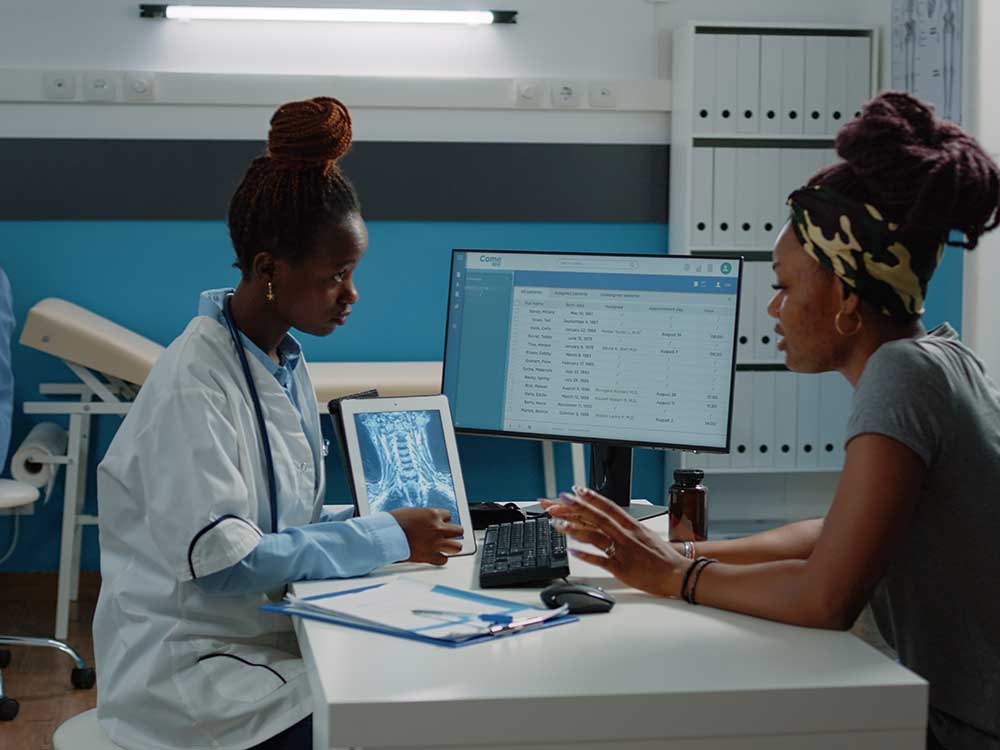Ideal Practices in Medical Management for Improving Effectiveness and Decreasing Costs
In the ever-evolving landscape of healthcare, the pursuit of best practices in medical administration is critical for improving effectiveness and suppressing expenditures. By integrating sophisticated technologies such as electronic health and wellness records and telemedicine, doctor can improve operations and boost individual care. However, technology alone is not a cure all; maximizing source allowance and cultivating collaborative interaction amongst care groups are similarly vital (medical administration). As organizations aim to balance top quality and expense, what approaches should be prioritized to attain these double goals? The response to these concerns hold the trick to an extra sustainable health care system.
Leveraging Advanced Innovation
The assimilation of electronic remedies right into healthcare systems has actually transformed the method centers run, simplifying processes and improving individual treatment. By systematizing person information, EHRs eliminate the need for cumbersome paperwork and help with seamless communication amongst medical care providers.
Telemedicine is an additional technical innovation that has actually revolutionized patient interaction. It offers ease for both individuals and health care experts by enabling remote consultations, which can lower the demand for in-person brows through and maximize consultation organizing. Furthermore, telehealth platforms can expand health care access to country or underserved areas, linking spaces in care delivery.
Furthermore, making use of Artificial Intelligence (AI) and machine learning is coming to be progressively prevalent in anticipating analytics, allowing for very early discovery of potential health and wellness issues and more enlightened decision-making. These technologies, when incorporated effectively, can enhance analysis accuracy and customize person treatment plans, inevitably leading to boosted healthcare results and functional efficiency.
Optimizing Source Allotment
By tactically handling sources such as personnel, equipment, and funds, healthcare centers can significantly enhance their operational efficiency, boost patient outcomes, and decrease unneeded expenses. The initial action in maximizing source allotment entails performing a thorough analysis of existing possessions and determining areas where resources might be underutilized or exhausted.
Focusing on resource allotment based on patient demands and solution needs is necessary. This includes aligning resources with high-demand areas, such as emergency treatment or specialized therapies, to make certain prompt and effective client care. Implementing flexible staffing versions can likewise enhance labor sources by changing workers allotment in response to rising and fall patient volumes. Furthermore, embracing telemedicine and various other technical remedies can minimize physical resource restrictions by providing different avenues for patient-provider communications.
Economic resources need to be carefully kept track of and designated with critical insight to sustain both short-term operational requirements and long-lasting institutional objectives. This includes investing in training programs that boost team proficiencies and embracing energy-efficient methods that decrease functional prices (medical administration). Inevitably, an optimized resource appropriation strategy fosters a sustainable health care atmosphere that is receptive, effective, and economically sensible
Streamlining Operations Procedures
When medical care centers aim to improve operational effectiveness, enhancing operations procedures comes to be a Get More Information pivotal focus. Efficient workflows lessen redundancy, remove unneeded actions, and improve sychronisation amongst medical care specialists. This approach not only accelerates service delivery but also enhances the quality of person care.

Following, innovation integration plays a considerable role in simplifying process. Executing electronic health and wellness records (EHRs) and electronic medical professional order entrance (CPOE) systems decreases documentation, lessens human mistake, and ensures info is accessible to all appropriate employees. Additionally, leveraging telemedicine platforms can enhance individual appointments and follow-ups, decreasing the stress on physical framework.

Inevitably, structured process result in cost reductions and boosted person complete satisfaction, cultivating an extra lasting health care atmosphere.
Enhancing Data Management
Building upon structured operations, maximizing data administration becomes a vital component in progressing medical care management. Effective data monitoring systems are critical for keeping precise client records, boosting decision-making, and making certain conformity with regulatory standards. By implementing robust data monitoring options, health care facilities can enhance the top quality of client care while simultaneously decreasing functional expenses.
One key aspect of boosting data management is the integration of advanced digital health and wellness record (EHR) systems. These systems promote the smooth exchange of client information throughout different divisions, minimizing duplication of examinations and reducing errors. A properly designed EHR system sustains information analytics, enabling doctor to recognize patterns and make educated choices concerning person care.
Moreover, securing patient information is critical. Taking on detailed cybersecurity measures, including security and normal audits, makes sure the honesty and confidentiality of delicate information. This not just protects clients yet also preserves the establishment's reputation.
Purchasing team training is one more essential element. Enlightening healthcare experts on information monitoring techniques improves their capability to properly utilize innovation, bring about improved client end results. In final thought, improving data monitoring via advanced technology and extensive training is vital for attaining performance and price decrease in clinical management.
Fostering Collaborative Interaction
An essential part beforehand clinical management is promoting collective communication among healthcare professionals. Effective interaction is extremely important for ensuring smooth patient care, enhancing therapy results, and minimizing errors. By urging open discussion and control across multidisciplinary teams, healthcare organizations can boost their functional effectiveness and decrease unnecessary prices.
Central to this strategy is the combination of communication technologies such as digital health and wellness records (EHRs) and secure messaging systems, which assist in the fast exchange of essential patient details. These tools enable doctor to gain access to and share data in actual time, making sure that all team participants are informed and straightened in their decision-making you could try these out processes. Moreover, normal team conferences and interdisciplinary rounds can even more advertise a culture of cooperation and responsibility.
Educating programs focused on improving communication skills are additionally necessary. These programs can help team establish the capacity to communicate details clearly and listen proactively, thus minimizing misunderstandings and cultivating a helpful workplace. Furthermore, adopting standard interaction protocols, such as SBAR (Scenario, History, Assessment, Referral), can improve the exchange of details, making certain that important information are conveyed succinctly and successfully. Ultimately, fostering joint communication results in boosted healthcare shipment and cost savings (medical administration).

Verdict
Integrating innovative modern technology, such as digital health records and telemedicine, alongside enhanced source allowance and structured operations procedures, is crucial for boosting performance in clinical management. Efficient data administration and promoting collaborative communication among medical care groups are vital for lessening redundancies and enhancing care quality. By prioritizing preventative treatment and involving in high quality improvement campaigns, medical care companies can achieve significant price financial savings and enhanced patient end results, consequently making sure sustainable medical care shipment in a progressively complex setting.